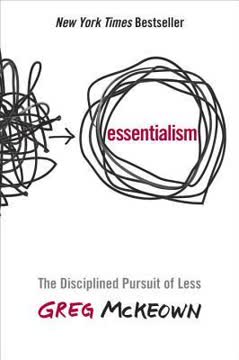Key Takeaways
1. Content marketing is about providing valuable information, not selling
Your customers don't care about you, your products, or your services. They care about themselves, their wants, and their needs.
Shift your mindset. Content marketing requires thinking differently about how to communicate with customers and prospects. Instead of interrupting them with promotional messages, focus on creating and distributing valuable, relevant content that helps solve their problems or answers their questions. This builds trust and positions your brand as a helpful resource. The goal is to attract and retain a clearly defined audience, ultimately driving profitable customer action.
Provide utility, not promotion. Effective content marketing educates, entertains, or inspires - it does not overtly sell. Some key principles:
- Fill a need - address customer pain points and informational needs
- Be consistent in quality and frequency
- Have a distinct point of view
- Avoid "sales speak" - focus on being helpful
- Strive to be the best, most comprehensive resource on your topic
2. Develop a content marketing mission statement to guide your strategy
Content marketing is not about "what you sell," it's about "what you stand for."
Define your purpose. A content marketing mission statement articulates why you are creating content and what value it will provide to your audience. It serves as a guiding light for all content creation. An effective mission statement includes:
- Your core audience
- What type of content you will deliver
- The benefit to the audience
Use it as a filter. Once developed, your mission statement becomes a powerful tool to:
- Evaluate content ideas - does it align with the mission?
- Guide content creators and keep messaging consistent
- Explain your content strategy to stakeholders
- Stay focused on audience needs vs. promotional goals
3. Create a sustainable content platform that you own and control
Don't build on rented land.
Own your home base. While leveraging social media and other external platforms is important, your primary content hub should be a digital property you fully control, typically a website or blog. This allows you to:
- Build a direct relationship with your audience
- Retain full control over the user experience
- Capture valuable data and analytics
- Protect yourself from algorithm changes or platform shutdowns
Hub-and-spoke model. Think of your owned platform as the hub, with social and other channels as spokes:
- Hub (e.g. blog): houses your main content
- Spokes (e.g. social media): amplify and drive traffic back to hub
- Repurpose hub content for various spoke channels
- Use consistent branding and messaging across all properties
4. Leverage social media and influencers to amplify your content
Social media is the fuel to set your content on fire.
Expand your reach. While creating great content is crucial, distribution is equally important. Social media and influencer partnerships can significantly amplify your content's reach:
Social media strategies:
- Share content across relevant platforms (e.g. LinkedIn, Twitter, Facebook)
- Use platform-specific features (e.g. hashtags, rich media)
- Engage with followers and participate in relevant conversations
- Consider paid promotion for key pieces of content
Influencer collaboration:
- Identify relevant influencers in your industry
- Engage with their content and build relationships
- Collaborate on content creation or cross-promotion
- Leverage their audience to expand your reach
5. Repurpose and atomize content across multiple formats and channels
Can you reimagine your stories in 10 different ways?
Maximize content value. Creating high-quality content requires significant resources. Repurposing allows you to get more mileage out of your efforts:
Content atomization strategies:
- Break long-form content into shorter pieces (e.g. blog post series from whitepaper)
- Adapt content for different formats (e.g. infographic from research report)
- Create micro-content for social media (e.g. quote graphics, short video clips)
- Combine related pieces into larger assets (e.g. e-book from blog posts)
Benefits of repurposing:
- Reaches audience members who prefer different formats
- Reinforces key messages through repetition
- Improves SEO by creating more entry points
- Increases ROI on content creation efforts
6. Measure content marketing impact on business objectives, not vanity metrics
Measure behavior that matters to your business.
Focus on meaningful KPIs. While metrics like pageviews and social shares provide some insight, they don't necessarily translate to business impact. Instead, focus on metrics that directly tie to your objectives:
Key areas to measure:
- Lead generation: form completions, email sign-ups
- Sales: online and offline purchases attributed to content
- Customer retention: repeat purchases, churn rate
- Brand awareness: search volume for brand terms, earned media mentions
Use a measurement framework. Organize metrics into a pyramid:
- Primary indicators: directly tied to business objectives (e.g. revenue)
- Secondary indicators: contribute to primary goals (e.g. qualified leads)
- User indicators: day-to-day metrics to optimize content (e.g. time on page)
7. Build an internal content creation process and consider outsourcing
Content marketing is a new muscle for most organizations.
Establish roles and workflows. Effective content marketing requires a structured approach:
Key roles to consider:
- Chief Content Officer: oversees strategy and execution
- Managing Editor: manages editorial calendar and content production
- Content Creators: produce content (writers, designers, videographers)
- Content Producers: package and distribute content
Evaluate outsourcing options. Many organizations benefit from a hybrid approach:
- In-house: strategy, subject matter expertise, final approval
- Outsourced: content creation, design, specialized skills
- Consider freelancers, agencies, or content marketplaces
8. Focus on solving customer pain points and answering their questions
If you constantly create Internet content without thinking through search engine optimization (SEO) and keywords, you will rank for something (content does resonate with search engine algorithms). Yet, you will consistently run the risk of shortchanging your SEO strategy—and your company's ability to grab its fair share of relevant search engine traffic—for branding, conversions, and more.
Understand your audience. Develop detailed buyer personas to guide content creation:
- Demographics and psychographics
- Goals and challenges
- Preferred content formats and channels
- Common questions and objections
Create content that addresses needs. Map content to different stages of the buyer's journey:
- Awareness: Educational content about industry trends and challenges
- Consideration: Comparative information about potential solutions
- Decision: Detailed product information, case studies, testimonials
9. Make your content easily discoverable through SEO best practices
Every piece of content on a website or in a blog post isn't necessarily going to take a company to number one on Google [or any search engine] for a keyword phrase that people use 15,000 times a month. But you can get more out of search engine optimization—with just a bit more effort.
Optimize for search engines and users. While creating content for humans is paramount, implementing SEO best practices ensures your content gets found:
Key SEO tactics:
- Keyword research: Identify relevant terms your audience is searching for
- On-page optimization: Use keywords naturally in titles, headers, and body copy
- Meta descriptions: Write compelling summaries to improve click-through rates
- Internal linking: Connect related content pieces on your site
- Mobile optimization: Ensure content is easily accessible on all devices
Track and improve performance. Regularly analyze search traffic and rankings to identify opportunities for improvement.
10. Continuously evolve your content strategy based on data and feedback
There is no perfection and, as Seth Godin says, shipping the product is the most important.
Embrace iteration. Content marketing is an ongoing process, not a one-time campaign. Continuously refine your approach based on:
- Analytics data: What content is performing well? Where are users dropping off?
- Audience feedback: Gather insights through surveys, comments, and social listening
- Industry trends: Stay informed about changes in your market and content landscape
- Competitive analysis: Monitor what's working for others in your space
Experiment and learn. Don't be afraid to try new formats, topics, or distribution channels. Use A/B testing to optimize performance over time. Remember that building a successful content marketing program takes time and persistence.
Last updated:
FAQ
What's Epic Content Marketing about?
- Content Marketing Focus: Epic Content Marketing by Joe Pulizzi emphasizes creating valuable content that resonates with your audience, teaching how to tell compelling stories that engage customers and drive business results.
- Strategic Approach: The book outlines a strategic framework for content marketing, including identifying your audience, defining your content niche, and measuring the impact of your content efforts.
- Transforming Businesses: It encourages businesses to act like media companies, focusing on storytelling and audience engagement rather than traditional advertising methods.
Why should I read Epic Content Marketing?
- Expert Insights: Joe Pulizzi is a recognized leader in the content marketing field, offering insights based on years of experience and research.
- Actionable Strategies: The book provides practical advice and strategies that can be implemented immediately to improve marketing efforts and drive customer engagement.
- Stay Competitive: Understanding content marketing can give businesses a competitive edge by fostering deeper connections with their customers in a saturated market.
What are the key takeaways of Epic Content Marketing?
- Content is King: The book stresses that customers care about their own needs, highlighting the importance of focusing on customer needs rather than products.
- Epic Content Principles: Pulizzi outlines six principles of epic content marketing, including filling a need, being consistent, and having a point of view.
- Engagement Cycle: Understanding the engagement cycle is crucial for delivering the right content at the right time, aligning with both the sales process and the customer’s buying journey.
What is the definition of content marketing according to Epic Content Marketing?
- Formal Definition: Content marketing is defined as creating and distributing valuable content to attract, acquire, and engage a clearly defined target audience, with the objective of driving profitable customer action.
- Focus on Value: The emphasis is on delivering valuable content that meets the informational needs of the audience rather than overtly selling products.
- Long-term Strategy: It is a long-term strategy that builds trust and loyalty over time, rather than a short-term campaign.
What are the six principles of epic content marketing in Epic Content Marketing?
- Fill a Need: Content should address unmet needs or questions of the audience, providing real value beyond just promoting products.
- Be Consistent: Consistency in content delivery is key to building trust and maintaining audience engagement.
- Be Human: Authenticity is important; content should reflect the brand's personality and connect emotionally with the audience.
How does Epic Content Marketing define the engagement cycle?
- Combination of Processes: The engagement cycle combines the internal sales process with the customer’s buying process, ensuring that content is relevant at each stage.
- Content Mapping: It involves mapping audience personas to the sales funnel, identifying what content is needed at each stage of the buying journey.
- Delivering Right Content: The goal is to deliver the right content at the right time, enhancing the customer experience and facilitating their decision-making process.
How do I create a content marketing mission statement according to Epic Content Marketing?
- Define Your Purpose: A content marketing mission statement should clearly articulate the purpose of your content efforts, answering questions like "What do we want to achieve?" and "Who is our target audience?"
- Align with Business Goals: Ensure that your mission statement aligns with your overall business objectives, helping in creating content that engages and drives business results.
- Keep it Concise: The mission statement should be concise and easy to understand, serving as a guiding principle for all content creation efforts.
What is the Content Marketing Pyramid in Epic Content Marketing?
- Three Levels of Metrics: The pyramid consists of primary, secondary, and user indicators, each focusing on different aspects of business goals and content performance.
- Mapping Goals: It helps marketers map their content efforts to specific business objectives, ensuring alignment with overall business goals.
- Example of Use: For instance, if your goal is to increase lead generation, your primary indicator might be the number of converted leads, while user indicators could include blog traffic and engagement metrics.
How can I measure the success of my content marketing efforts according to Epic Content Marketing?
- Focus on Business Objectives: Measurement should align with your business goals, such as sales growth, cost savings, or customer retention.
- Use the Right Tools: Employ analytics tools like Google Analytics to track user behavior and engagement, providing insights into content performance.
- Evaluate Multiple Metrics: Consider various metrics, including consumption, sharing, lead generation, and sales metrics, to understand the full impact of your content marketing initiatives.
What is the importance of storytelling in content marketing as per Epic Content Marketing?
- Engagement Through Stories: Storytelling is a powerful way to engage your audience, enhancing or changing behavior through compelling narratives.
- Building Emotional Connections: Good stories create emotional connections with your audience, making your content more relatable and memorable.
- Differentiation: In a crowded market, storytelling helps differentiate your brand from competitors, positioning your brand as a thought leader in your industry.
How do I identify my content niche according to Epic Content Marketing?
- Research and Analysis: Start by researching your industry and identifying gaps in the current content landscape, looking for underrepresented but relevant topics.
- Audience Needs: Understand your audience's pain points and interests to guide you in selecting a niche that provides value.
- Test and Iterate: Create content and test its effectiveness, using feedback and analytics to refine your approach and ensure you are meeting your audience's needs.
What are some common mistakes in content marketing as highlighted in Epic Content Marketing?
- Inconsistency: Failing to maintain a consistent content schedule can disrupt the dialogue with your customers.
- Lack of Audience Understanding: Not knowing your audience can lead to irrelevant content that fails to engage.
- Ignoring Measurement: Overlooking the importance of measuring content's impact makes it challenging to determine what works and what doesn't, hindering future efforts.
Review Summary
Epic Content Marketing receives mostly positive reviews, with readers praising its practical advice and comprehensive overview of content marketing strategies. Many find it valuable for both beginners and experienced marketers. Some criticize it for being basic or repetitive, while others appreciate its real-world examples and actionable tips. The book is commended for its emphasis on creating valuable, customer-focused content and its insights into the evolving landscape of digital marketing. Overall, it's considered a essential read for those in the field.
Similar Books










Download PDF
Download EPUB
.epub digital book format is ideal for reading ebooks on phones, tablets, and e-readers.







